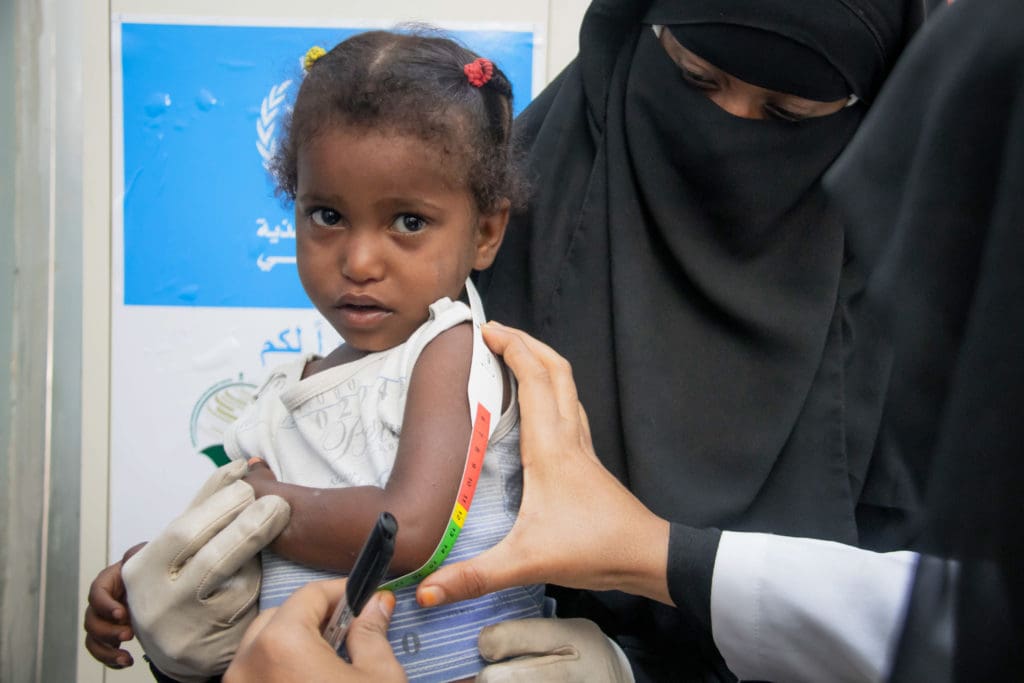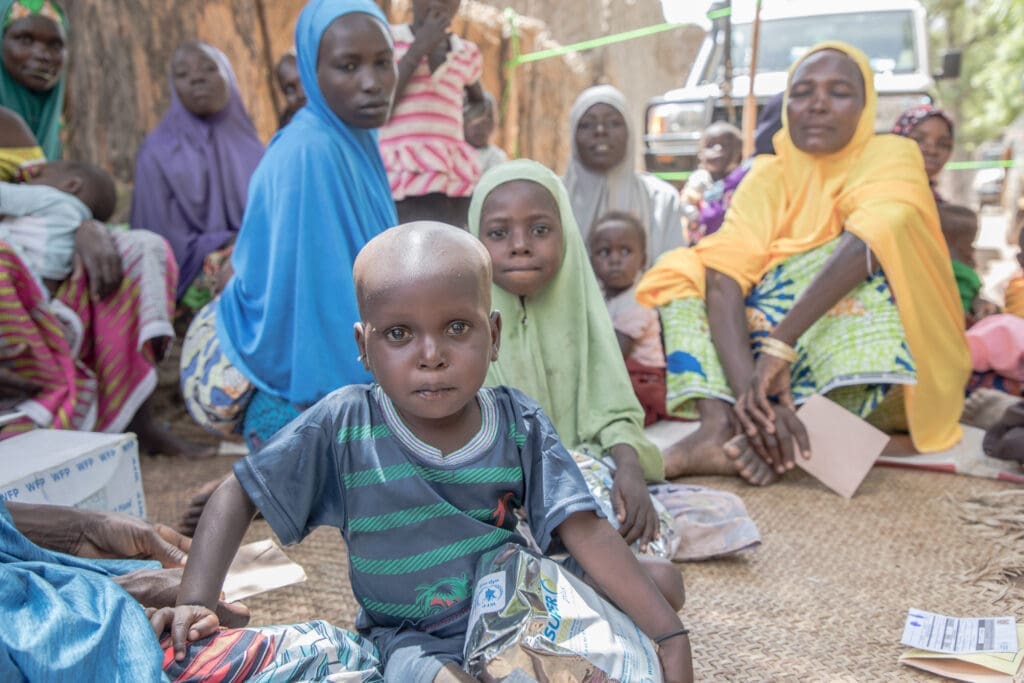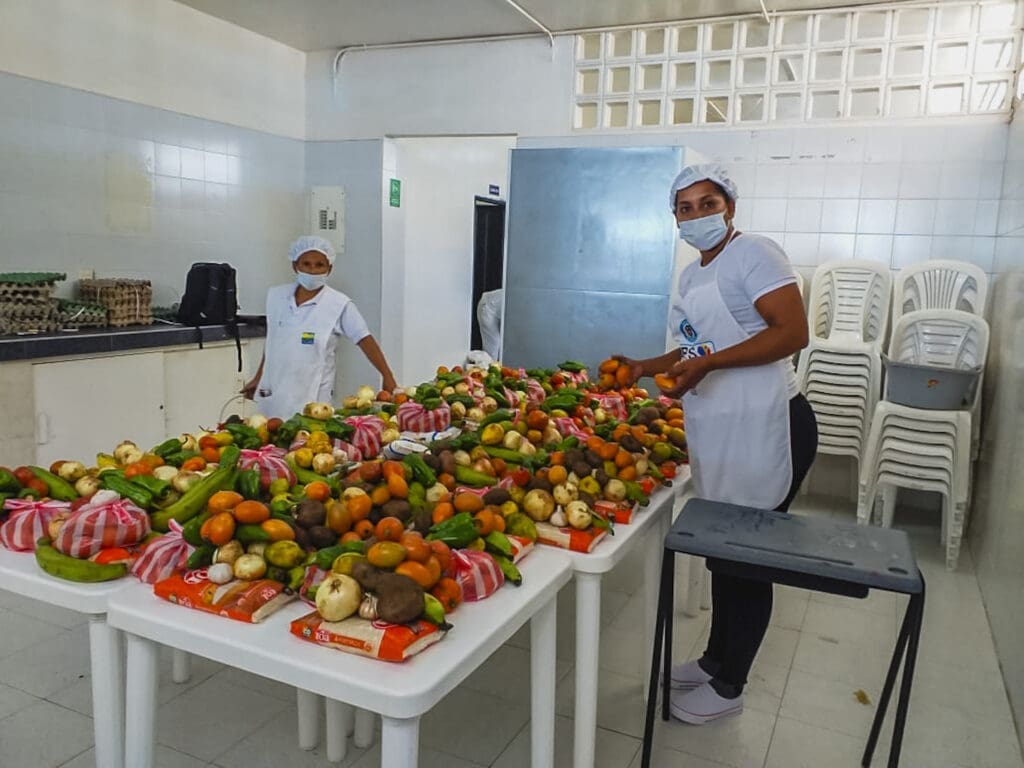Coronavirus Threatens to Push Millions of Children Into Malnutrition: The Time to Act Is Now

WFP, UNICEF, FAO and WHO have issued an urgent call to action to governments, donors, private sector and partners to prioritize nutrition in their COVID-19 responses
Children are not the face of this pandemic, but they are at risk of becoming its biggest victims. The crisis is profoundly affecting their wellbeing — through the disease itself but more so, through the socioeconomic impacts of lockdowns, movement restrictions and a reduction in economic activity.
The virus can have a devastating effect on small bodies already weak from poor nutrition. Even in normal circumstances, a severely malnourished child is nine times more likely to die than a healthy child.

Rahaf, 2-years-old, is diagnosed with Moderate Acute Malnutrition at a WFP-supported nutrition center in Yemen. Yemen has some of the highest rates of malnutrition in the world.
At the same time, facing a loss of income and disruptions in food markets, many families won’t be able to provide nutritious foods for their children. For millions of people in countries experiencing protracted conflicts, violence and more frequent natural disasters, this pandemic is proving to be a fatal blow to their livelihoods. As weak food systems and even weaker health systems are gravely challenged, children at risk of or already suffering from malnutrition could be pushed into a downward spiral of malnutrition and disease.
The latest State of Food Security and Nutrition report reveals there are already 3 billion people who cannot afford a healthy diet. The pandemic and its lockdown effects are a double whammy for the world’s most impoverished families. And — just like any other crisis — it will hit the most vulnerable the hardest.
It is the hungry who will become even hungrier and the poor who will become even poorer.
New projections indicate the number of acutely malnourished children could rise by over 14 percent due to the socioeconomic impacts of the pandemic. As a result, this year an additional 6.7 million children – 80 percent of them in sub-Saharan Africa and South Asia — could suffer from this deadliest form of malnutrition.

Acute malnutrition induced by the coronavirus pandemic could result in more than 10,000 child deaths a month.
Acute malnutrition caused by inadequate and poor-quality food consumption (lack of nutrients) or illness, or both, results in sudden weight loss and, if untreated, can lead to death. The heart-rending projections on increase in acute malnutrition among children could translate into more than 10,000 child deaths per month during the first 12 months of the pandemic.
These children are not numbers. Each and every one of the millions of children at risk of falling into acute malnutrition has a family and community. Parents are making astounding efforts. But as the crisis threatens to deal a deathblow to their already fragile livelihoods, many won’t be able to put food on the table.
Preventing and treating malnutrition cannot wait. The United Nations World Food Programme (WFP) has already prepositioned specialized nutritious foods in or near the countries most at risk, but our funds are running out. We need more support to ensure the supply chains of these foods are not disrupted by problems of transport, trade or production.

Nearly 370 million schoolchildren in 195 countries missed out on school meals and other health services between March and June.
At the same time, we are liaising with governments to ensure continuity of nutrition programs through the necessary adaptations, such as social distancing, community groups and mobile clinics.
In response to COVID-19, WFP and UNICEF have scaled up their partnership on school health and nutrition to ensure the most vulnerable children continue to receive support amidst school closures. We are also working together with governments to prepare for when schools re-open so that when classes resume, children will get an integrated school health and nutrition package.

After schools closed in Colombia, WFP switched to take-home rations (THRs) and distributed 34 metric tons of food to students across 311 schools.
Nearly 370 million schoolchildren in 195 countries missed out on school meals and other health services between March and June. For many of them, the meal they receive in school is the only meal they can count on. School feeding programs provide crucial social protection, nutrition and health support to vulnerable children and their families across the world.
If we fail to act now, we will unquestionably face a devastating loss of life, health and productivity among future generations. Getting nutrition right today will determine whether the consequences of COVID-19 for children will be felt for months, years or decades to come.
This blog was written by Lauren Landis and Ljubica Vujadinovic and originally appeared on WFP’s Insight.
We cannot feed the people who count on us without your support. Visit our children's page to see how you can help.




